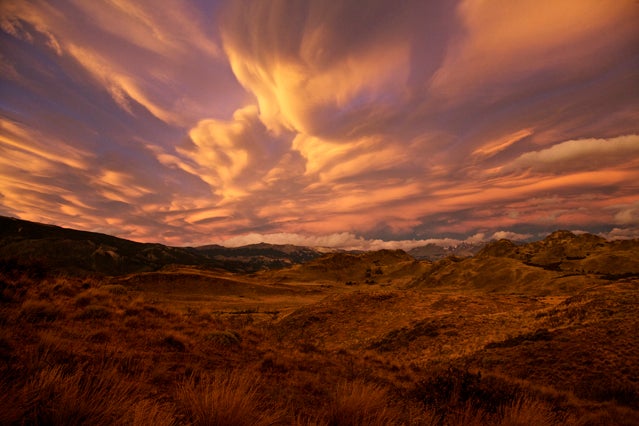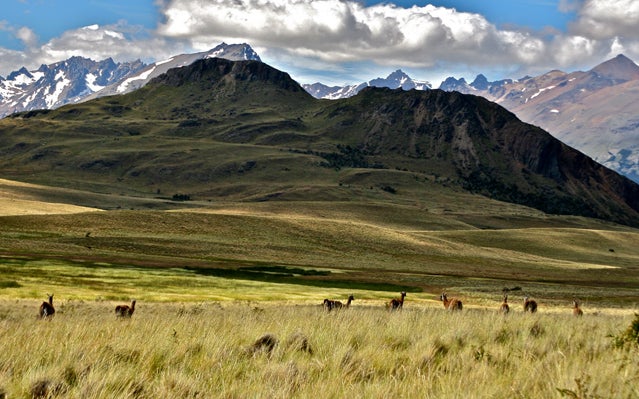
“Buying the land was the easy part,” Kristine
Tompkins told a packed house during a presentation at the San Francisco Patagonia
retail store last week. She was referring to the 2.2 million acres that she and her husband Doug Tompkins have acquired in
Chile and Argentina over the past 20 years as part of their Herculean efforts
to conserve and rehabilitate the grasslands, forests, wetlands, rivers, high
alpine, and biodiversity of the Patagonia region.
The slideshow the audience watched offered an update on the Tompkins' current project,
Patagonia National Park, a 200,000-acre tract that includes the Chacabuco Valley and was formerly a
major sheep and cattle ranching area.
The Tompkinses are outdoor recreation industry legends and
environmental firebrands. She is a founder and former CEO of Patagonia—the company—and he started both The North Face and the clothing company Esprit. Doug
Tompkins started acquiring land in Chile in the early 1990s, adding adjacent
parcels until he had amassed more than 700,000 acres to form Pumalin Park,
which he donated to the Chilean government. But this initial foray into private
wildlands philanthropy was not a smooth process, as Doug Tompkins was met with
much suspicion and a fair amount of hostility over the scheme. Some Chileans
and Argentineans asked: How can this foreigner waltz in, buy up the land, and
tell us what we can and cannot do with it?
“It was a difficult time for me, personally,” said
Kris Tompkins, referring to the Pumalin Park development. As we noted in this
2001 story
about the couple, the shift to Kris at the helm was an effort to put a more
diplomatic foot forward, for ongoing deal-making with the Chilean and
Argentinean governments.
In 2000, she founded , the NGO under
which the Tompkins are now developing parklands (Pumalin Park was developed
through another organization, the ).
The first Conservacion Patagonica project was the establishment of the
155,000-acre Monte Leon National Park, Argentina’s first coastal continental
national park. In 2003, she and CP launched the Patagonia National Park
project.
During the presentation, Nadine Lehner, Conservacion Patagonica's
executive director, provided an update on the trail development and
biodiversity programs being established in advance of Patagonia National Park's
opening.
Employing volunteer help—both Chileans and foreign
visitors—the group has removed more than 400 miles of fencing from the park
(used for ranching) and are now well into trail building, having completed the
16-mile Lagunas Atlas loop that links to a campground in the area. Projects still
under development include a trail along the Baker River on its western border.
The leg of the Baker that runs through the park had been threatened by a major
hydroelectric proposal that was rerouted. But the company behind the project,
HidroAysen, has not abandoned its big plans to build five large-scale dams on
the Baker and Pascua rivers. Conservacion Patagonica and other groups are fighting the project and
hope that a trail along the river inside the park would help build opposition
to the dams.
FLORA AND FAUNA
Conservacion Patagonica is putting a big emphasis on
bringing locals into the project wherever possible, and one way it's doing so
is by employing people who used to hunt pumas (as a means of reducing livestock
deaths) and retraining them as puma trackers who work with biologists to
support and grow the native population.
Part of that work involves capturing and GPS-collaring animals
in the park in order to track them and determine whether they're subsisting on
other wild animals or on livestock. The research has shown that the pumas are
mostly eating guanacos, wild relatives of llamas.
Park staff are also tracking and studying the endangered
huemul deer inside the park. The huemul is a key focus, Lehner pointed out,
because Chileans hold the animal in high esteem—”it's like the bald
eagle for Chile.”

Staff are also working to root out invasive plants and reintroduce native ones around the park—in areas where decades of grazing
haven't led to desertification.
READYING FOR PRIME TIME
While the work is ongoing and the entire infrastructure is
not yet complete, the park is already open to visitors, who can camp within its boundaries. Also, the lux Lodge at Valle Chacabuco
is open from October to April every year. The current projects are scheduled to wrap up
in early 2015, at which point there will be a proper grand opening.
The Tompkins' long-term plan is to donate the land to the Chilean
government to be establishment as a national park. But those
negotiations are still ongoing.
—Mary Catherine O'Connor